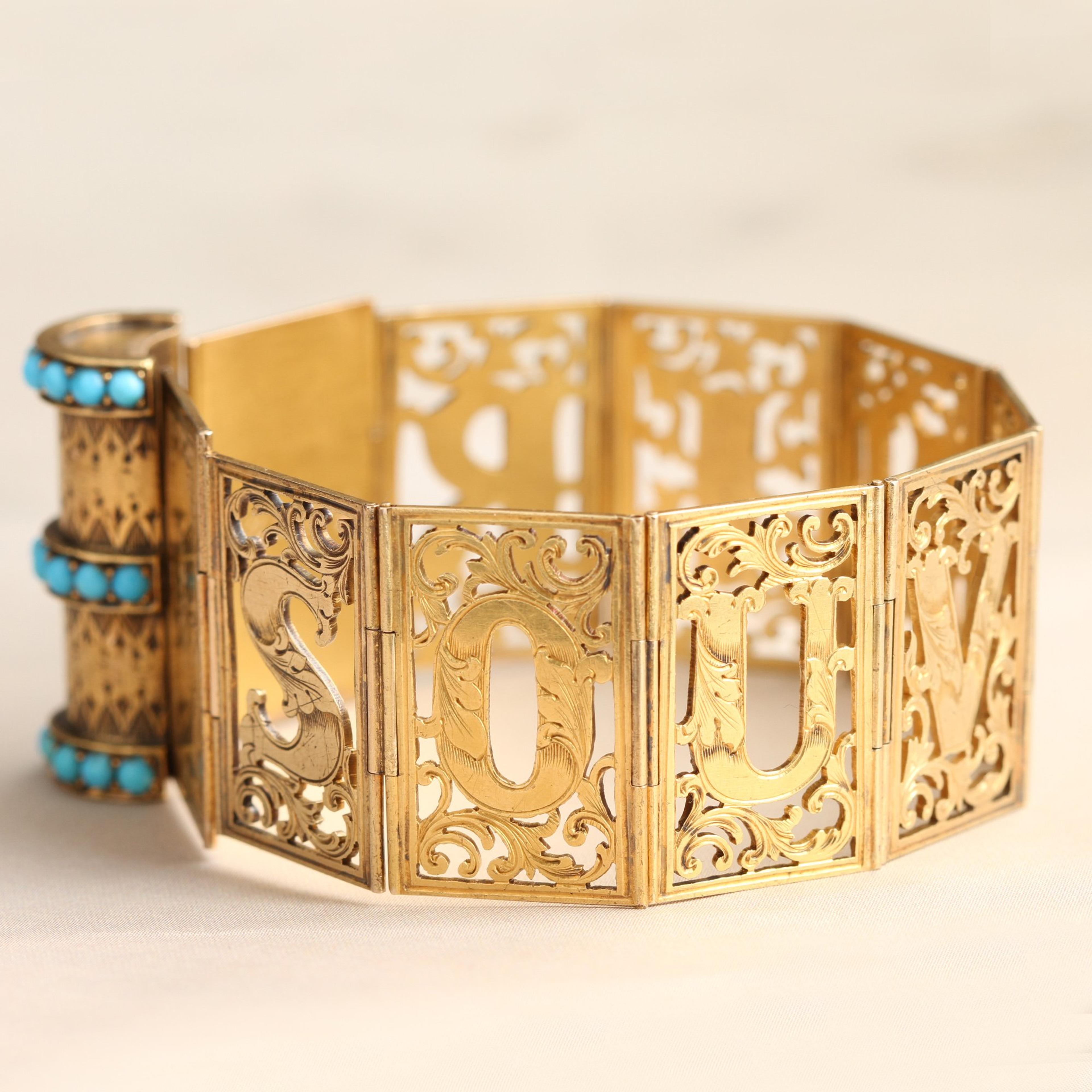This cleverly conceived Victorian bracelet folds into a book with ornate chasing on the front, back and spine and a binding composed of turquoise cabochons. The blue of the turquoise is meant to evoke the petals of the forget me not, an important and oft used flower in Victorian era jewelry for obvious sentimental reasons. The gold book expands into a 7" bracelet with exquisite openwork panels that spell out the word "Souvenir". The idea of the souvenir really came into being during the Victorian era, people were moving about the world with greater ease and collecting mementos as they went. Although this bracelet forms the word "souvenir", the meaning of this bracelet is a little different than what we typically think of when we talk about souvenirs. It's helpful to think of it in terms of its French translation of "memory", this wonderful piece would have been given as a love token to commemorate an important event or day in the life of two intimates, in this case that special day is engraved on the interior, "Oct 19th 1867." Exquisite, unusual, very rare and in excellent antique condition.
thedetails
- Materials
14k gold (tests) and turquoise cabochons
- Age
c. 1860
- Condition
Excellent - minor scuffs and scratches commensurate with age and use
- Size
7" length, 1" width of panels, book closed 1 3/8 x 1 1/8"
Need more photos?
Send us an email to request photos of this piece on a model.

Aboutthe
VictorianEra
1837 — 1901
The Victorians were avid consumers and novelty-seekers, especially when it came to fashion, and numerous fads came and went throughout the 19th century. In jewelry, whatever fashion choices Queen V. made reverberated throughout the kingdom. The Romantic period reflected the queen’s legendary love for her husband, Albert.
Jewelry from this period featured joyful designs like flowers, hearts, and birds, all which often had symbolic meaning. The queen’s betrothal ring was made in the shape of a snake, which stood for love, fidelity, and eternity. The exuberant tone shifted after Prince Albert passed away in 1861, marking the beginning of the Grand Period. Black jewelry became de rigeur as the Queen and her subjects entered “mourning,” which at the time represented not just an emotional state, as we conceive of it today, but a specific manner of conduct and dress. She wore the color black for the remainder of her life, and we see lots of black onyx, enamel, jet, and gutta percha in the jewelry from this time. Finally, during the late Victorian period, which transitioned along with a rapidly changing world into the “Aesthetic Movement”, there was a return to organic and whimsical motifs: serpents, crescent moons, animals, and Japonaisserie designed for the more liberated “Gibson Girl”. During the second half of the 19th century, America entered the global jewelry market, with Tiffany and Co. leading the way. Lapidaries continued to perfect their techniques, and the old European cut emerged toward the end of the Victorian period. The discovery of rich diamond mines in South Africa made the colorless stones more accessible than ever before.


